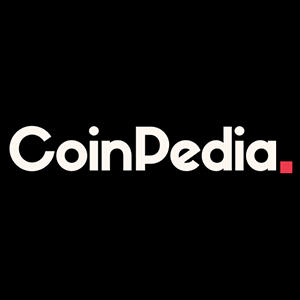The stablecoin market has achieved a significant milestone, surpassing $200 billion in total market capitalization , according to data from CoinGecko . This marks a 13% increase over November, reflecting the growing adoption of stablecoins as a key asset in the cryptocurrency ecosystem. Analysts from IntoTheBlock attribute this growth to heightened demand from investors seeking higher yields on decentralized finance (DeFi) platforms, which outperform traditional financial products in terms of returns. What Are Stablecoins? Defining Stablecoins Stablecoins are a category of cryptocurrencies designed to maintain a stable value by being pegged to a reserve asset, such as: Fiat Currencies: Examples include the U.S. Dollar (USDT, USDC) and Euro (EURT). Commodities: Gold-backed stablecoins like PAX Gold (PAXG). Cryptocurrencies: Algorithmic stablecoins pegged to other digital assets. Why Are Stablecoins Important? Low Volatility: Unlike traditional cryptocurrencies, stablecoins offer price stability, making them ideal for transactions and savings. DeFi Integration: Stablecoins are the backbone of DeFi, enabling liquidity provision, lending, and yield farming. Global Accessibility: They provide a gateway for unbanked populations to access financial services. Factors Driving Stablecoin Growth 1. DeFi Yields Outperforming Traditional Finance The rise of decentralized finance has been a major catalyst for stablecoin adoption: Higher Returns: DeFi platforms offer yields significantly higher than traditional bank savings accounts or bonds. Popular Use Cases: Stablecoins are widely used for staking, lending, and liquidity farming on platforms like Aave, Compound, and Uniswap. 2. Institutional Adoption Institutions are increasingly using stablecoins for: Cross-Border Transactions: Faster and cheaper settlements compared to traditional banking systems. Treasury Management: As a hedge against fiat currency depreciation. 3. Increased Market Accessibility Stablecoins have become more accessible through: Regulated Platforms: Platforms like Coinbase and Binance offer easy access to stablecoins. Interoperability: Stablecoins can now be used across multiple blockchains, including Ethereum, Binance Smart Chain, and Solana. Key Players in the Stablecoin Market Dominant Stablecoins Tether (USDT): Continues to lead with a market cap exceeding $84 billion , making it the most widely used stablecoin. USD Coin (USDC): Backed by Circle and Coinbase, USDC has a market cap of over $65 billion . Binance USD (BUSD): Issued by Binance in partnership with Paxos, BUSD accounts for approximately $30 billion . Emerging Stablecoins DAI: A decentralized stablecoin managed by the MakerDAO protocol. Frax (FRAX): A fractional-algorithmic stablecoin gaining popularity in DeFi. The Role of Stablecoins in DeFi Liquidity and Lending Stablecoins are the lifeblood of DeFi: They provide liquidity for trading pairs on decentralized exchanges (DEXs). They enable lending and borrowing at competitive interest rates. Yield Farming Stablecoins are a favorite asset for yield farming: Investors deposit stablecoins into DeFi protocols to earn interest or rewards in native tokens. Platforms like Curve Finance specialize in stablecoin liquidity pools, offering attractive yields. Challenges Facing the Stablecoin Market Regulatory Scrutiny As stablecoins grow in adoption, they are drawing increased attention from regulators: Central Bank Concerns: Regulators worry about stablecoins’ impact on monetary policy and financial stability. Compliance: Issuers must navigate complex regulations, including anti-money laundering (AML) and know-your-customer (KYC) requirements. Algorithmic Stablecoin Risks Algorithmic stablecoins face unique challenges: Volatility Risks: They can de-peg during extreme market conditions, as seen with TerraUSD (UST) in 2022. Trust Issues: Investors remain cautious due to past failures. The Future of Stablecoins Integration with Central Bank Digital Currencies (CBDCs) Stablecoins may coexist with CBDCs , complementing each other in the global financial system: CBDCs: Centralized and government-issued. Stablecoins: Decentralized and adaptable to various use cases. Expansion into Emerging Markets Stablecoins offer a lifeline for individuals in countries with unstable currencies: Hedge Against Inflation: Protect savings from local currency depreciation. Financial Inclusion: Provide access to global financial services for the unbanked. Market Outlook Continued Growth Analysts predict stablecoins will continue to grow in market capitalization, driven by: Expanding use in DeFi and cross-border transactions. Adoption by institutional and retail investors seeking stability and yield. Challenges to Watch Regulation: Governments may impose stricter controls, impacting the pace of growth. Competition: New entrants and CBDCs may challenge existing stablecoins. Conclusion The $200 billion market cap milestone underscores the critical role stablecoins play in the cryptocurrency ecosystem. Their ability to provide stability, liquidity, and accessibility has made them indispensable for DeFi and institutional adoption. As the stablecoin market evolves, it will face challenges such as regulatory scrutiny and algorithmic risks. However, its potential to transform global finance remains undeniable. Whether through DeFi integration, cross-border payments, or financial inclusion, stablecoins are shaping the future of money. To learn more about the innovative startups shaping the future of the crypto industry, explore our article on latest news, where we delve into the most promising ventures and their potential to disrupt traditional industries.














